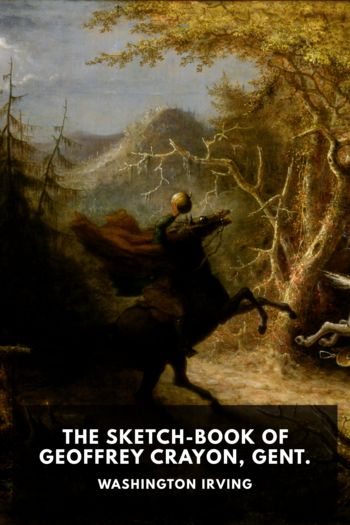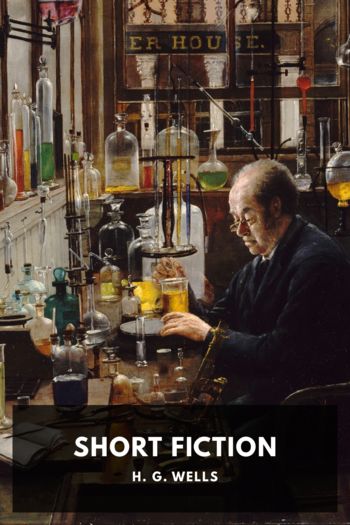The Origin of Species by Charles Darwin (ebook smartphone TXT) 📕

- Author: Charles Darwin
Book online «The Origin of Species by Charles Darwin (ebook smartphone TXT) 📕». Author Charles Darwin
An argument of great weight, and applicable in several other cases, is, that the above-specified breeds, though agreeing generally with the wild rock-pigeon in constitution, habits, voice, colouring, and in most parts of their structure, yet are certainly highly abnormal in other parts; we may look in vain through the whole great family of Columbidae for a beak like that of the English carrier, or that of the short-faced tumbler, or barb; for reversed feathers like those of the Jacobin; for a crop like that of the pouter; for tail-feathers like those of the fantail. Hence it must be assumed, not only that half-civilized man succeeded in thoroughly domesticating several species, but that he intentionally or by chance picked out extraordinarily abnormal species; and further, that these very species have since all become extinct or unknown. So many strange contingencies are improbable in the highest degree.
Some facts in regard to the colouring of pigeons well deserve consideration. The rock-pigeon is of a slaty-blue, with white loins; but the Indian sub-species, C. intermedia of Strickland, has this part bluish. The tail has a terminal dark bar, with the outer feathers externally edged at the base with white. The wings have two black bars. Some semi-domestic breeds, and some truly wild breeds, have, besides the two black bars, the wings chequered with black. These several marks do not occur together in any other species of the whole family. Now, in every one of the domestic breeds, taking thoroughly well-bred birds, all the above marks, even to the white edging of the outer tail-feathers, sometimes concur perfectly developed. Moreover, when birds belonging to two or more distinct breeds are crossed, none of which are blue or have any of the above-specified marks, the mongrel offspring are very apt suddenly to acquire these characters. To give one instance out of several which I have observed: I crossed some white fantails, which breed very true, with some black barbs—and it so happens that blue varieties of barbs are so rare that I never heard of an instance in England; and the mongrels were black, brown and mottled. I also crossed a barb with a spot, which is a white bird with a red tail and red spot on the forehead, and which notoriously breeds very true; the mongrels were dusky and mottled. I then crossed one of the mongrel barb-fantails with a mongrel barb-spot, and they produced a bird of as beautiful a blue colour, with the white loins, double black wing-bar, and barred and white-edged tail-feathers, as any wild rock-pigeon! We can understand these facts, on the well-known principle of reversion to ancestral characters, if all the domestic breeds are descended from the rock-pigeon. But if we deny this, we must make one of the two following highly improbable suppositions. Either, first, that all the several imagined aboriginal stocks were coloured and marked like the rock-pigeon, although no other existing species is thus coloured and marked, so that in each separate breed there might be a tendency to revert to the very same colours and markings. Or, secondly, that each breed, even the purest, has within a dozen, or at most within a score, of generations, been crossed by the rock-pigeon: I say within a dozen or twenty generations, for no instance is known of crossed descendants reverting to an ancestor of foreign blood, removed by a greater number of generations. In a breed which has been crossed only once the tendency to revert to any character derived from such a cross will naturally become less and less, as in each succeeding generation there will be less of the foreign blood; but when there has been no cross, and there is a tendency in the breed to revert to a character which was lost during some former generation, this tendency, for all that we can see to the contrary, may be transmitted undiminished for an indefinite number of generations. These two distinct cases of reversion are often confounded together by those who have written on inheritance.
Lastly, the hybrids or mongrels from between all the breeds of the pigeon are perfectly fertile, as I can state from my own observations, purposely made, on the most distinct breeds. Now, hardly any cases have been ascertained with certainty of hybrids from two quite distinct species of animals being perfectly fertile. Some authors believe that long-continued domestication eliminates this strong tendency to sterility in species. From the history of the dog, and of some other domestic animals, this conclusion is probably quite correct, if applied to species closely related to each other. But to extend it so far as to suppose that species, aboriginally as distinct as carriers, tumblers, pouters, and fantails now are, should yield offspring perfectly fertile, inter se, seems to me rash in the extreme.
From these several reasons, namely, the improbability of man having formerly made seven or eight supposed species of pigeons to breed freely under domestication—these supposed species being quite unknown in a wild state, and their not having become anywhere feral—these species presenting certain very abnormal characters, as compared with all other Columbidae, though so like the rock-pigeon in most other respects—the occasional reappearance of the blue colour and various black marks in all the breeds, both when kept pure and when crossed—and lastly, the mongrel offspring being perfectly fertile—from these several reasons, taken together, we may safely





Comments (0)